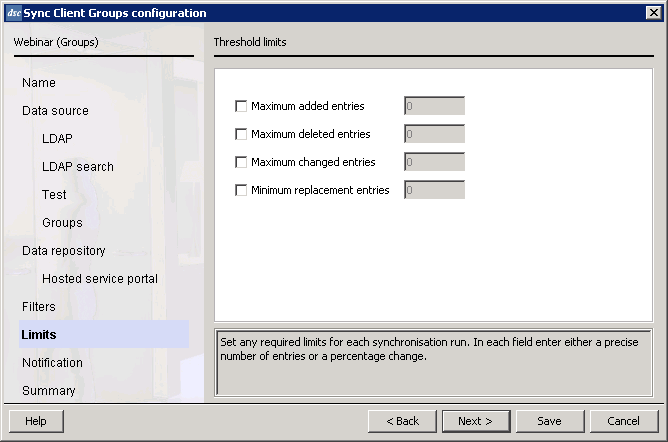Limits
We strongly recommend that you use threshold limits to provide a safeguard against accidental deletion of entries in your data repository. Threshold limits warn you when the number of added or deleted entries exceeds a specified amount. This protects you from mistakes in your configuration, especially if you are using filters.

You can enter threshold limits as absolute numbers or as a percentage. Percentages must be followed by a percent (%) symbol.
If your LDAP servers contain referrals, we recommend you set threshold limits to ensure that if a referred server is not available, the update does not continue. for more information about referrals, see Defining advanced LDAP server settings.
- Maximum added entries is the largest number of entries from your data source that can be added. If this number is exceeded, the synchronization process is aborted.
- Maximum deleted entries is the largest number of entries from your data source that can be deleted. If this number is exceeded, the synchronization process is aborted. A percentage greater than 100% is treated as 100%.
- Maximum changed entries is the largest number of entries from your data source that can be modified. If this number is exceeded, the synchronization process is aborted. Note that this is not available for mail synchronizations.
- Minimum replacement entries is for actions that cause the entire contents of the repository to be overwritten. This is the minimum number of entries to be accepted. If fewer entries are found in the data source, the synchronization process is aborted.
If any of your threshold limits are exceeded, the Directory Synchronization Client displays a message asking if you wish to force the update.
When the Directory Synchronization Client is running in command line mode and a threshold limit is exceeded, the synchronization is not performed. If you have set up email notifications, you are notified of this.